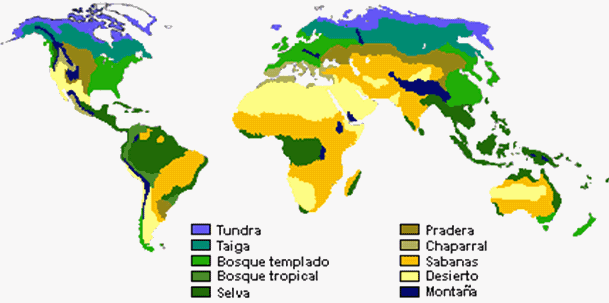Biomes themselves are named and grouped according to climate and the plants and animals that live in them.
If you want to travel around the world, you can visit dry deserts that have lots of cacti, cold poles with minimal plants, to humid tropical rain forests. These different areas of the Earth are called biomes.
Below is complete information about the definition of a biome along with other important information. Listen well yes.
Definition of biome
1. In General
A biome is a large area of land classified according to climate, and the plants and animals that make their homes there. A biome contains many ecosystems within the same area.
Land-based biomes are called terrestrial biomes. Water-based biomes are called aquatic biomes. Temperature, amount of precipitation and common organisms characterize the world’s biomes.
2. According to Experts
The following is the definition of biome according to experts, namely:
a. Charles Kendrich
The definition of a biome is a part of a large variety of geographical units in the earth. In the biome, it is seen based on the number of differences that exist in the types of vegetation from the climate and the environment in which flora and fauna live, which has no boundaries.
b. Wikipedia
The definition of a biome is an area that has the same geographical / climatic characteristics and includes communities of animals, plants, bacteria, soil organisms, and viruses.
The scope of the biome includes several ecosystems along with large and distinct regional elements of the biosphere.
A biome is characterized by the presence of a distinctive plant and animal community.
Within the Earth itself, biomes can be grouped into seven main types of biomes, namely tropical rain forests, grasslands, savannas, deciduous forests, deserts, tundra, and taiga.
The vegetation that takes place in each environment has its own uniqueness.
The uniqueness of plant vegetation is a form of plant adaptation to a unique growth environment.
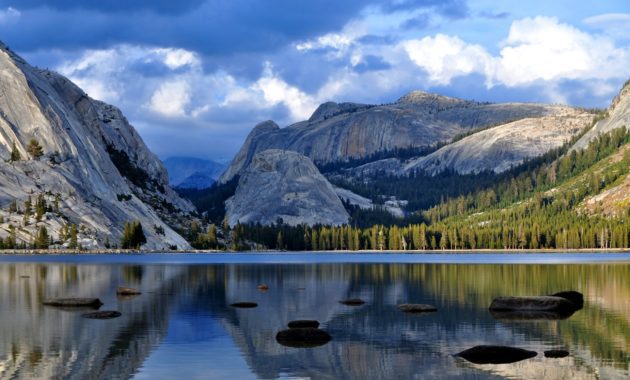
Function of Biome
the determination of biome in a particular area is done not without reason, specifically in the biological aspects related to the diverse classification of flora & fauna.
Well, here are some functions of determining biomes that you need to know, namely:
- Facilitate data collection activities for various types of flora and fauna species.
- Facilitate the process of grouping various types of flora and fauna that have just been discovered / known.
- As a method to find out the types of flora and fauna by observing the way of life of these living things in adapting to their environment.
- Help so that the arrangement of certain populations can run easily and smoothly.
Characteristic of Bioma
As mentioned above, biomes are created due to differences in geographical location between regions, the intensity of sunlight, and also rainfall.
From this review, it can be seen that the biome has the following characteristics:
- Can be recognized by looking at the main vegetation.
- Occupies a very wide area / area.
- It is a collection of various types of population.
- Created as a result of the interaction between the environment and organisms that live in the environment itself.
- In a biome, there are producers, consumers, and decomposers (decomposers).
- The community life is quite stable, unless something happens that can cause the community to become unstable/disturbed.
- The name of the biome is generally given by looking at / adjusting to the dominating vegetation.
Factors Affecting the Biome
Referring to the understanding related to biomes, we can conclude that the existence of a biome with all its characteristics can be caused by several factors.
Here are some factors that have a great influence on the state of the biome, among them are:
- Geographical location.
- Rainfall.
- Climatic conditions / conditions.
- The intensity of light from the sun.
Kinds of Biomes
After knowing the various reviews related to the definition of the biome above, then you need to know the types of the biome itself in the review below.
1. Grassland Bioma
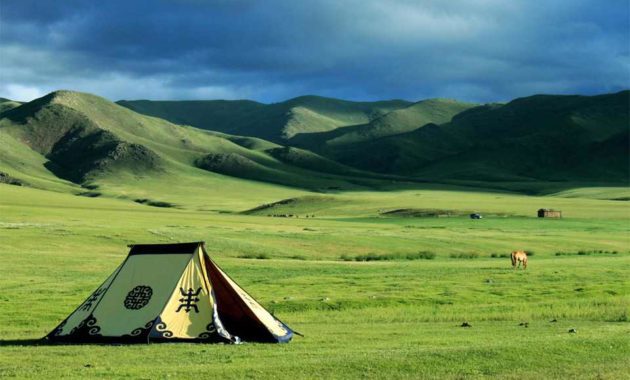
Grasslands can be found in tropical / subtropical areas. The rainfall in this biome is 250-500 mm/year.
Steppes or savannas are generally located in the border area between the tropics and subtropics. For example, in Southern Russia, Hungary, South America, Central Asia, and Australia.
The following are the characteristics of the prairie or steppe biome, namely:
- Has poor porosity and drainage due to irregular rain.
- During the day, the air temperature is 45 degrees C. At night, the air temperature can reach 0 degrees C.
- Evaporation (evaporation) is easier than precipitation.
- The humidity is very low.
The predominant plant on this type of biome is grass. No wonder when experts refer to it as grassland biome. Stepa itself is a term for grassland for Russian society.
While the animals that can be found in this place are zebras (Africa), bison (America), lions, kangaroos (Australia), wild dogs, wolves, and cheetahs.
2. Desert Biome
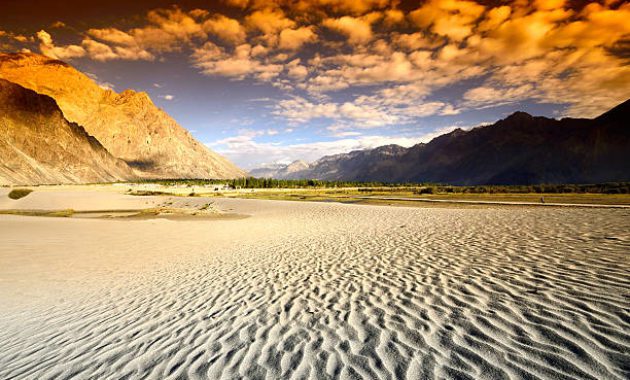
The desert is known for its area of minimal rainfall. The average rainfall in the desert can be said to be very low, which is below 20 cm/ year.
Extreme temperatures that can occur in desert areas can reach 60 degrees C. It is not surprising that the soil structure is very fragile.
Even so, there are still animals and plants that can survive in this desert biome.
Examples of plants that can live in the desert biome are succulents, cacti, eucalypts, and plants with other stiff leaves.
And for the animals themselves there are camels, scorpions, spiders, snakes, lizards, and several types of insects.
3. Tropical Forest Biome
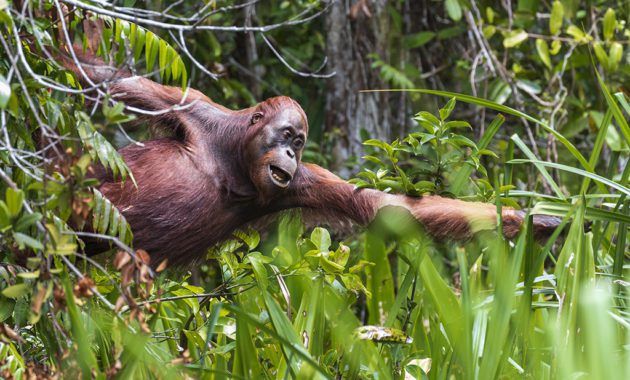
The definition of a tropical forest biome is one type of forest that is very fertile and can only be found in the tropics. The diversity of plants that live in this biome is also very high.
You can find this type of biome along the Amazon River – Orinoco, Central America, and most of Southeast Asia, Papua New Guinea, and the Congo Basin in Africa.
The following are the characteristics of the tropical forest biome, namely:
- Has a temperature range of 25 degrees C – 31 degrees C.
- Has a high rainfall throughout the year, namely 200 – 225 cm/ year.
- There is no significant change in temperature from one month to another.
- Illuminated with sunlight all year round.
- There are lots of big trees that make the area in the forest seem always dark.
- Has very fertile soil.
The plants that you can find in this biome include woody plants with a height of 20-40 m, epiphytes, rattan, bird’s nest nails, orchids, and others.
And for the animals are squirrels, monkeys, various types of birds, lions, tigers, jaguars, and other animals.
4. Savannah Biome
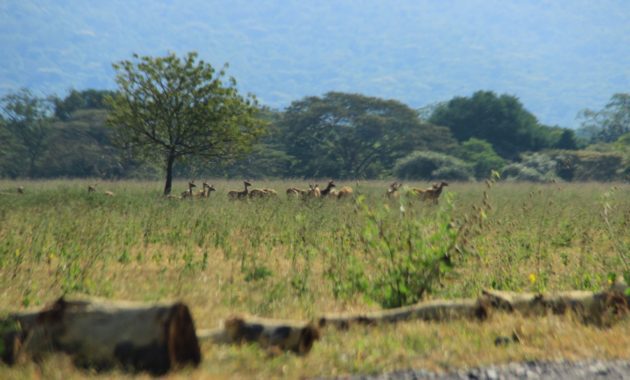
In general, this one savanna is almost the same as a prairie. But what distinguishes between the two is the presence of trees that grow in spreads, such as palms and acacias.
Advertisement
This type of biome is located in the tropics and subtropics.
The following are the characteristics of the savanna forest biome, namely:
- Has a rainfall of 250 – 700 mm/ year. There is a uniqueness associated with the rainfall, that is, when the rainfall in the savannah is low (250 – 500 mm/ year), then the savannah will become a bush. However, when the rainfall is high (500 – 700 mm/ year), the savannah will turn into a rainforest.
- The dry months last from December to February. The wet month takes place in May.
- The intensity of the rain is irregular.
- Drainage / water flow takes place quickly.
- High porosity / permeation.
Animals that can live in this type of biome are zebras, lions, giraffes, elephants, and buffaloes.
The most famous sabana is in East Africa, specifically Tanzania, which is in the Serengeti Plateau.
5. Taiga Biome
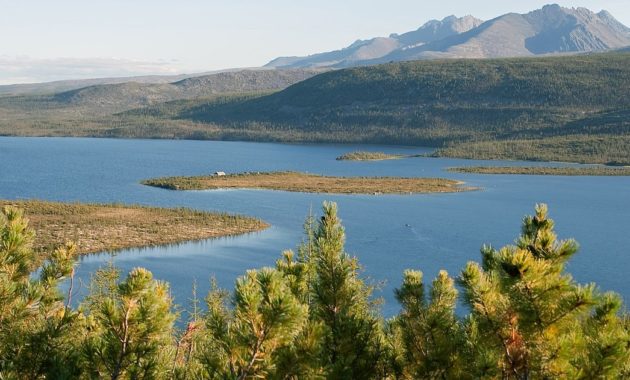
The taiga biome is a biome dominated by leafy, needle-like plants.
You can find this type of biome between the subtropics and the poles, such as Russia, Scandinavia, Alaska, Siberia, and Canada.
The following are the characteristics of the taiga forest biome, namely:
- Has a fairly high temperature difference in summer and winter.
- The growth of trees takes place in the summer, which is between 3-6 months.
- Has a rainfall of 250 mm/ year.
- Summer only lasts 3 months, the rest is winter.
Plants that can live in the taiga area are dominated by coniferous plants such as albus, pine, juniper, spruce, elder, and spruce.
As for the animals that live in this biome, such as wolves, black bears, squirrels, and several types of birds.
6. Deciduous Forest Biome
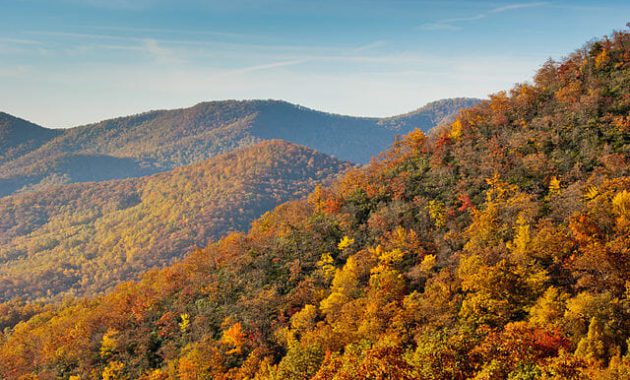
Autumn is one of the seasonal characteristics that you can only find in some subtropical countries / four seasons.
So it is not surprising that the deciduous forest biome can only be found in subtropical areas, such as Korea, China, Japan, Australia, the eastern part of the United States, and England.
The number of trees that live in this biome is not much and not too close. The various plants will wither / drop their leaves when winter arrives.
The following are the characteristics of the deciduous forest biome, namely:
- Has a high rainfall throughout the year, namely 700 – 1,000 mm/ year.
- It has four seasons, namely spring, winter, summer, and autumn.
- Has a wide variety of low plant types.
- The trees that live in this forest have leaves that are not too wide.
The animals that can live in this forest are deer, wolves, bears, and woodpeckers.
7. Mangrove Biome
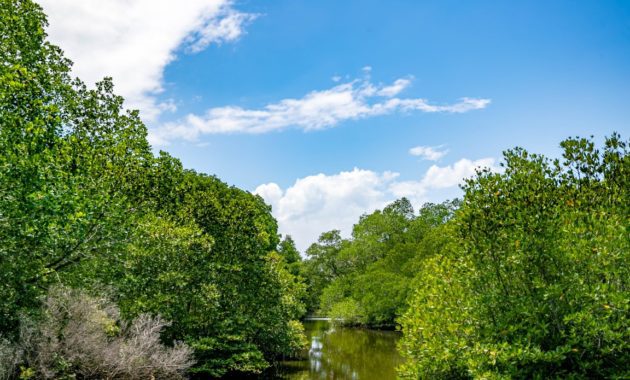
You can find mangrove biomes along the coast in tropical and subtropical regions.
One of the functions of this mangrove forest is to minimize the effects caused by seawater abrasion.
In Indonesia itself, mangrove forests are located along the east coast of Sumatra, the west and south coasts of Kalimantan, the Segara Anakan area, and Wonorejo Surabaya.
The following are the characteristics of the mangrove forest biome, namely:
- The water and soil have a high salt content.
- The soil type is muddy soil.
- The oxygen content in the water and the soil is low.
Plants that can live in mangroves are mangroves, bogem trees, and firewood trees. As for the animals, there are crocodiles, fish, monitor lizards, and several types of birds.
8. Tundra Biome
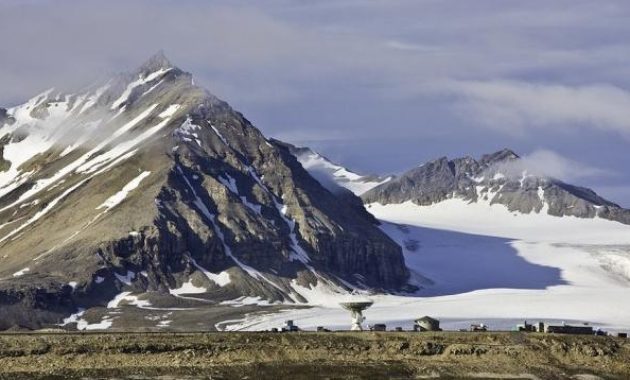
Tundra is a term which means a plain without trees. It is clear that the tundra biome is a biome that is not inhabited by trees like other types of biomes. This is because the tundra biome is located in an area with extreme temperatures such as the polar regions.
The vegetation in this tundra area is only in the form of moss and crust moss. The presence of tundra biome can be found in the Arctic and Antarctic regions.
The following are the characteristics of the tundra biome, namely:
- Has a very long winter duration, which is about 9 months.
- It has very low rainfall, ie 100-250 mm/year.
- The life span of the plants here is 3 months, exactly during the summer.
- Most of the soil is source rock with little weathering.
- The highest temperature there is only 10 degrees C and cold temperatures reach -35 degrees C.
Plants that can live in the tundra biomass are mosses, crustaceans, and grasses.
As for the animals that you can find in this area, namely penguins (south pole), polar bears (north pole), walruses, sea lions, polar dogs, wildebeest, thick hairy bison, and several types of birds.
9. Sea Ice Bioma
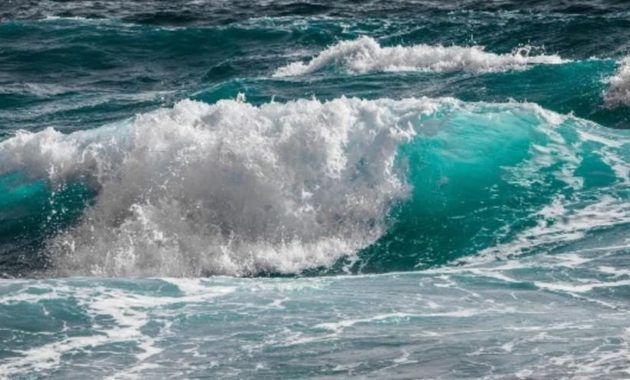
Sea ice biome is a biome that is located in sea ice / above frozen seawater that floats.
The formation of the sea ice biome is the result of the interaction of all marine organisms from the polar oceans.
10. Moss Forest Biome
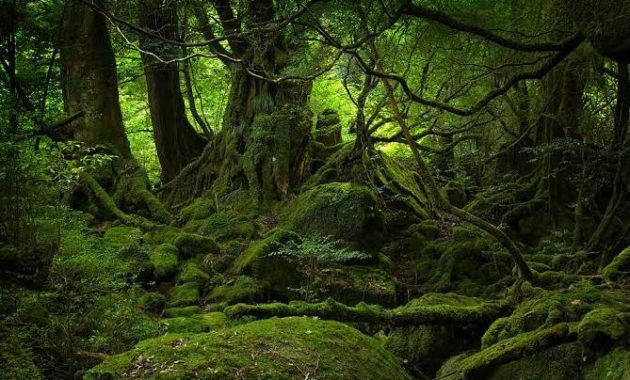
You can find many moss forest biomes on the slopes of the mountains / mountains. A moss forest that is created in an area that is at the boundary of water vapor condensation.
The most common plant found in moss forest biome types is moss. Moss growth that takes place on the surface of soil, rocks, and trunks of woody trees.
This moss forest has various trees covered by moss. The moss forest biome has very high humidity as well as low temperatures.
This condition causes dew to form and almost rains throughout the day.
11. Seasonal Forest Biome
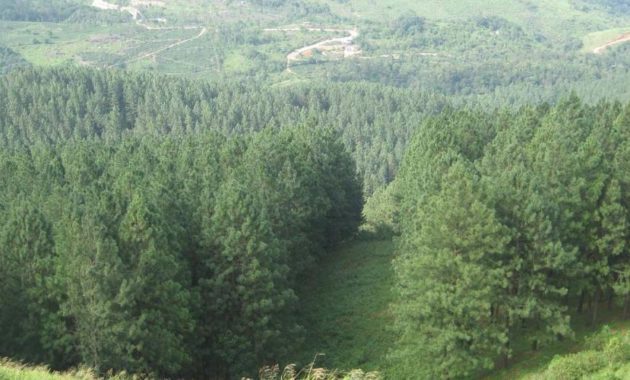
The seasonal forest biome consists of drought-resistant trees. These types of trees are included in trophophytic plants that can adapt to dry or wet conditions.
During the dry season, the leaf form of plants in the forest biome this season is withered. On the other hand, during the rainy season, seasonal forest biome plants have dense leaves.
The naming of the seasonal forest is adapted from the name of the tree type, such as teak forest and angsana forest.
You can find many types of seasonal forest forests in Indonesia, especially in Central Java and East Java.
Meanwhile, the types of fauna that are often found in the forest this season are deer, tigers, and wild boars.
Examples of Aquatic Biomes
Aquatic biomes are related to bodies of water.
The following are some examples of aquatic biomes, namely:
1. Marine Biome
Marine biomes include the world’s oceans, the largest aquatic biomes, which are characterized by the presence of salt water. The oceans have various layers associated with the penetration of sunlight.
2. Freshwater Biome
The freshwater biome contains water where the salt concentration is very low and includes wetlands, ponds, lakes, and rivers.
Lakes and ponds experience thermal mixing. This biome can accommodate waterfowl, fish, crustaceans, algae, and microorganisms.
The river will continue to move towards the lake or ocean. Their current speed affects the types of species that live in them and also the clarity of the water.
3. Coral Reef Biome
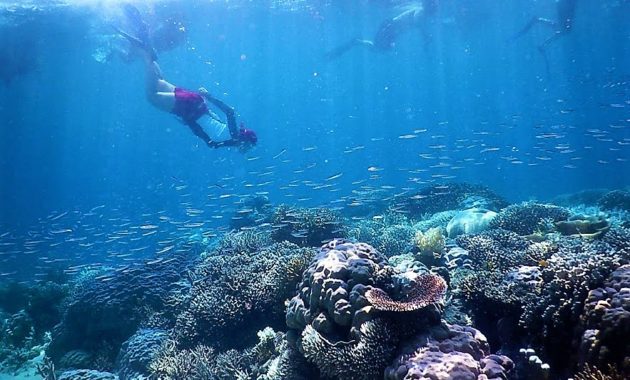
Coral reefs are found in shallow parts of some tropical oceans. Made from the remains of various classifications of coral animals, this one reef accumulates over time and provides habitat for many underwater species.
The Great Barrier Reef of Australia is a great example of a coral reef biome.
4. Wetland Biome
Wetlands are shallow bodies of water such as swamps and mud. They provide habitat for many plants as well as animals.
On this type of biome has a stable water flow on freshwater wetlands.
5. estuary Biome
An estuary is where an ocean meets fresh water. Plants that can tolerate changes in salinity are referred to as holophytes. Estuaries offer important breeding sites for crustaceans as well as a variety of waterfowl.
An example for a large estuarine biome is that of the Florida Everglades.
